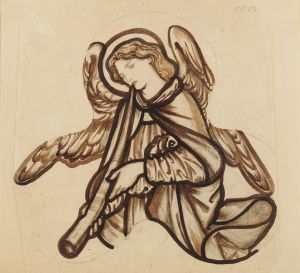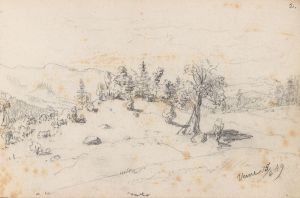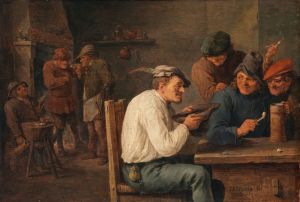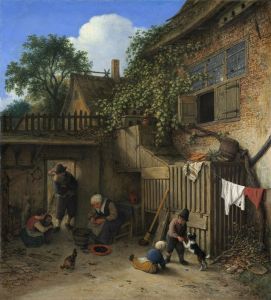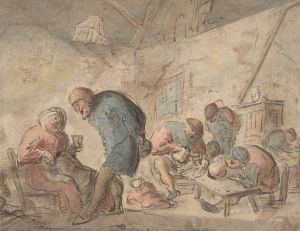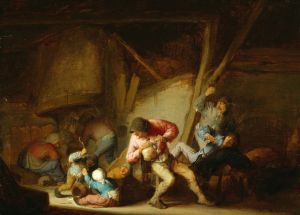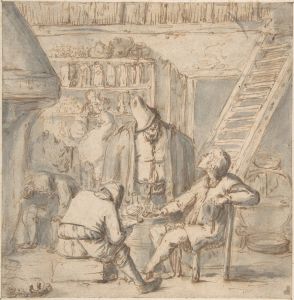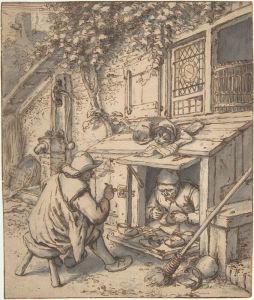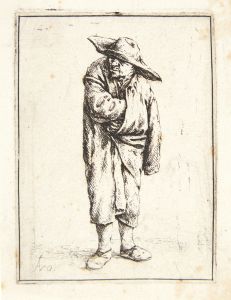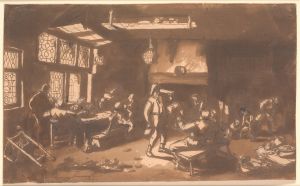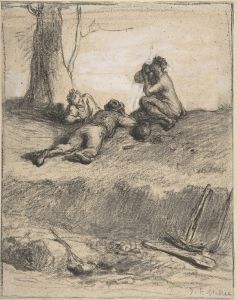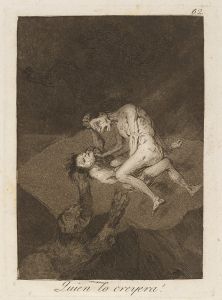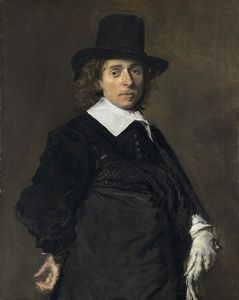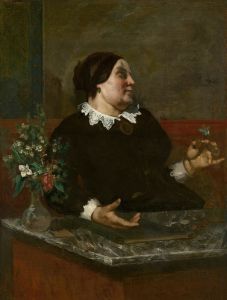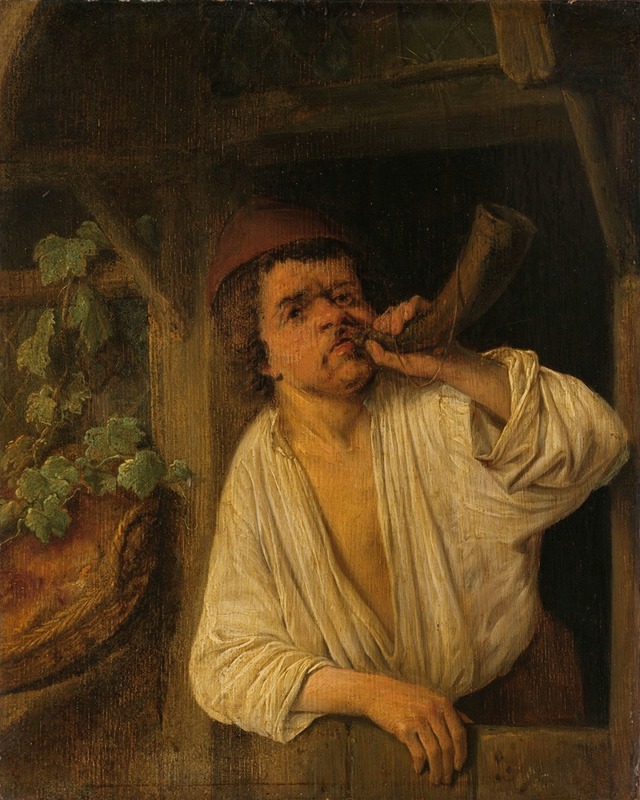
A Baker Sounding his Horn
A hand-painted replica of Adriaen van Ostade’s masterpiece A Baker Sounding his Horn, meticulously crafted by professional artists to capture the true essence of the original. Each piece is created with museum-quality canvas and rare mineral pigments, carefully painted by experienced artists with delicate brushstrokes and rich, layered colors to perfectly recreate the texture of the original artwork. Unlike machine-printed reproductions, this hand-painted version brings the painting to life, infused with the artist’s emotions and skill in every stroke. Whether for personal collection or home decoration, it instantly elevates the artistic atmosphere of any space.
Adriaen van Ostade was a Dutch Golden Age painter known for his genre scenes depicting peasant life. One of his works, "A Baker Sounding his Horn," is a fine example of his ability to capture the everyday activities and characters of 17th-century Dutch society. Although specific details about this particular painting are limited, it is consistent with Ostade's broader body of work, which often focused on the lives of common people.
Ostade was born in 1610 in Haarlem, a city that was a significant center for art and culture during the Dutch Golden Age. He was a pupil of Frans Hals, a master portraitist, and was influenced by the works of Rembrandt and other contemporaries. Ostade's paintings are characterized by their detailed and lively depictions of rural and urban life, often infused with humor and a keen observation of human nature.
"A Baker Sounding his Horn" likely portrays a scene involving a baker, a common subject in Ostade's work, reflecting the importance of bread and baking in Dutch society. Bakers were essential figures in the community, and their role was often celebrated in art and literature. The act of "sounding a horn" could be associated with the baker announcing the availability of fresh bread, a practice that was not uncommon in European towns during this period.
Ostade's technique involved the use of rich, warm colors and a mastery of light and shadow, which brought his scenes to life. His compositions often included a variety of figures engaged in different activities, creating a dynamic and engaging narrative. The settings were typically rustic interiors or village exteriors, filled with the tools and objects of daily life, providing a glimpse into the material culture of the time.
The painting would have been created during a period when the Dutch Republic was experiencing economic prosperity and cultural flourishing. This era saw a rise in the middle class, who became patrons of the arts, seeking works that reflected their own lives and values. Ostade's paintings, with their focus on the everyday and the familiar, would have appealed to these patrons.
While specific information about "A Baker Sounding his Horn" is scarce, it can be appreciated within the context of Ostade's oeuvre. His works are housed in major museums around the world, including the Rijksmuseum in Amsterdam and the Louvre in Paris, where they continue to be studied and admired for their artistic merit and historical insight.
In summary, Adriaen van Ostade's "A Baker Sounding his Horn" is a testament to his skill in portraying the vibrancy of everyday life in 17th-century Holland. Through his detailed and lively compositions, Ostade offers a window into the past, capturing the essence of a society that valued community, labor, and the simple pleasures of daily existence.





